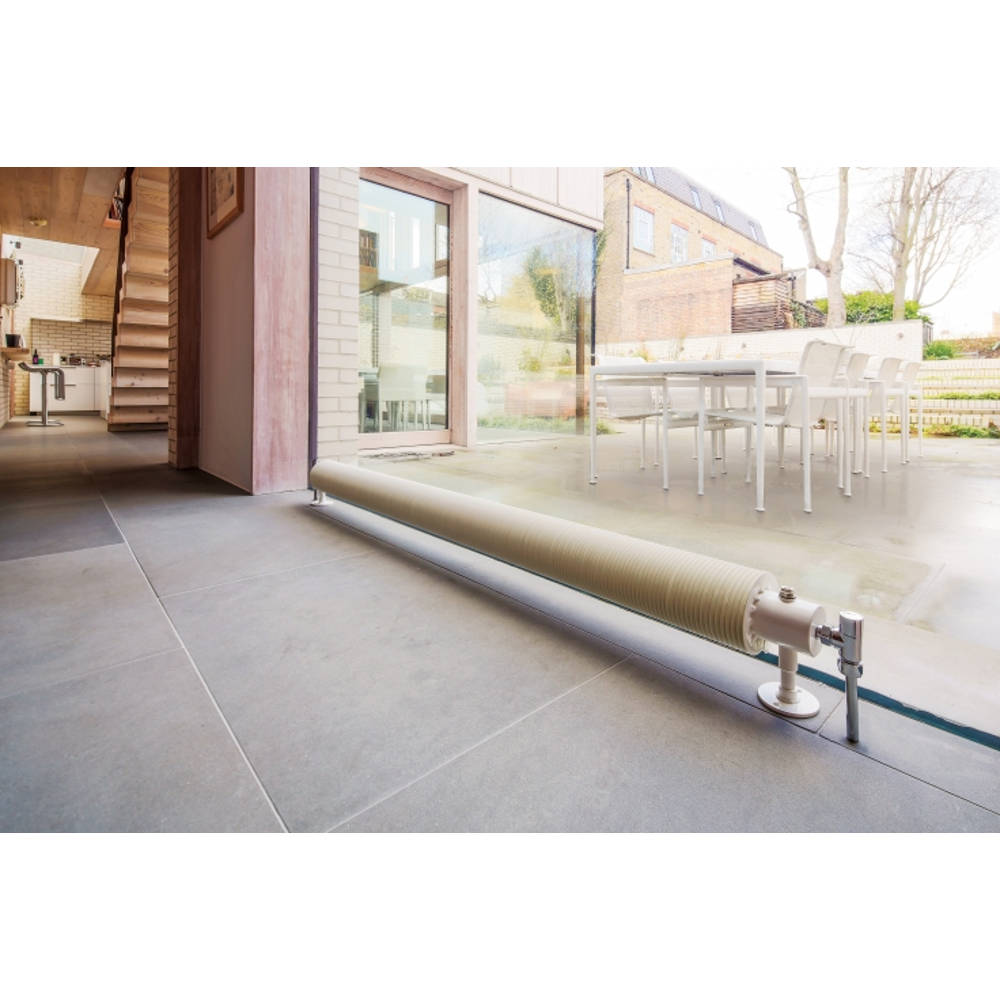The Best Low Surface Temperature Radiators: A Safe Heating

When it comes to heating your home or office, safety should always be a top priority. Traditional radiators can pose a threat, especially when they become too hot to touch. This is where low surface temperature radiators come in, providing a safe and efficient heating solution that prioritizes safety and reliability.
Low surface temperature radiators are designed to operate at a lower temperature than traditional radiators, reducing the risk of burns or other hazards. They are an excellent choice for families with young children, the elderly, or anyone who values safety in their home or workspace.
In this section, we will explore the world of low surface temperature radiators, from their unique design and benefits to installation and maintenance. By the end of this article, you will be able to make an informed decision about whether low surface temperature radiators are the right choice for your heating needs.
Key Takeaways:
- Low surface temperature radiators are a safer heating solution than traditional radiators.
- They operate at a lower temperature, reducing the risk of burns or other hazards.
- Low surface temperature radiators are ideal for families with young children, the elderly, or anyone who values safety in their home or workspace.
- They offer many benefits, including improved energy efficiency and cost savings.
- The installation and maintenance of low surface temperature radiators are crucial for optimal performance and longevity.
Understanding Low Surface Temperature Radiators
Low surface temperature radiators, also known as LST radiators, are a type of heating system that is designed to operate at a lower surface temperature than traditional radiators. The primary purpose of this design is to increase safety, particularly in environments where vulnerable individuals are present, such as hospitals, schools, or care homes.
The design of LST radiators is based on the principle of encapsulation. The heating element is encased within a metal cover, which is then coated with a protective layer of enamel or paint. This cover reduces the surface temperature of the radiator, preventing the risk of burns or injuries if someone accidentally comes into contact with it.
The low surface temperature of these radiators does not compromise their heating efficiency. They can still provide comfortable and consistent heat output, with temperature control mechanisms such as thermostats or timers to regulate temperature and energy use.
How LST Radiators Work
Low surface temperature radiators use a combination of natural convection and radiation to heat a room. The heating element within the radiator heats the air around it, creating warm air currents that rise and circulate throughout the room. The radiator also emits infrared radiation, which heats surfaces such as walls and furniture.
This dual heating system provides an even distribution of warmth, preventing cold spots and drafts. LST radiators are suitable for use in any room, including bedrooms, living rooms, and hallways.
The reduced surface temperature of LST radiators also means that they are less likely to accumulate dust or debris. This improves the air quality of the room, making them an ideal choice for people with allergies or respiratory issues.
The Benefits of Low Surface Temperature Radiators
Low surface temperature radiators offer numerous benefits over traditional radiators. Here are some of the key advantages:
- Safety: Low surface temperature radiators are specifically designed to reduce the risk of burns and injuries. Their surface temperature remains low, making them safe to touch, even when in use. This makes them an ideal choice for homes with children, elderly, or vulnerable individuals, as well as public spaces.
- Energy Efficiency: Low surface temperature radiators are highly energy-efficient. They operate at lower water temperatures than traditional radiators, reducing the amount of energy needed to heat a room. This translates into lower energy bills and reduced carbon footprint.
- Comfort: Low surface temperature radiators provide consistent and comfortable heat distribution. They have a larger heating surface area than traditional radiators, ensuring that the heat is evenly distributed throughout the room. This eliminates cold spots and drafts, creating a comfortable living environment.
- Design: Low surface temperature radiators come in a range of stylish designs and finishes, allowing homeowners to choose a model that suits their interior decor. They can be wall-mounted or freestanding, and are available in a range of sizes to suit different room dimensions.
- Maintenance: Low surface temperature radiators require minimal maintenance compared to traditional radiators. Their surface stays dust-free and easy to clean, reducing the need for frequent cleaning. They also have a longer lifespan than traditional radiators, due to their high-quality construction and durability.
Installation and Maintenance of Low Surface Temperature Radiators
Proper installation and maintenance are essential to ensure the optimal performance and longevity of low surface temperature radiators. Here are some key considerations:
Installation of low surface temperature radiators
It is recommended to have a qualified heating engineer to install your low surface temperature radiator. They will ensure that the installation meets building regulations and is appropriate for the space. Before installation, the following steps should be taken:
- Choose a suitable location that is away from windows and doors and has enough clearance for proper airflow.
- Ensure that the wall is strong enough to support the weight of the radiator.
- Drill holes in the wall for brackets and pipe connections.
- Attach brackets and fix the radiator to the wall.
- Connect the pipes to the radiator and the heating system.
- Check for leaks and test the heating system before use.
Maintenance of low surface temperature radiators
Proper maintenance will help ensure that your low surface temperature radiator remains efficient and safe. Here are some maintenance tips:
- Regularly clean the radiator to prevent dust and debris buildup that can affect its performance.
- Check for signs of damage, such as leaks or cracks, and promptly address any issues.
- Ensure that the airflow is not blocked by furniture or other objects.
- Have the radiator serviced annually by a qualified heating engineer to ensure that it is in good working condition.
By following these installation and maintenance guidelines, you can help ensure that your low surface temperature radiator remains functional, safe, and efficient for years to come.
Choosing the Right Low Surface Temperature Radiator for Your Space
When it comes to choosing the right low surface temperature radiator for your space, there are several factors to consider. By taking the time to evaluate your needs, you can ensure that you select the best option for efficient and effective heating.
Size
The size of the radiator you choose will depend on the size of your room and the level of heating required. It’s essential to measure the room accurately to ensure that the radiator’s heat output is appropriate for the space. For larger rooms, you may need multiple radiators installed.
Style
The style of the radiator is a crucial consideration, as it can impact both the effectiveness of the heating and the aesthetics of the space. There are various styles of low surface temperature radiators to choose from, including vertical, horizontal, and compact designs.
Heat Output
Each radiator has a specific heat output measured in watts, and it’s important to select one that can provide sufficient heating for the space. Be sure to compare the heat output of different radiators before making your final decision.
Accessories
Accessories such as valves and pipe sleeves can also impact the effectiveness and appearance of your low surface temperature radiator. You may want to consider purchasing accessories that complement the style and size of the radiator to ensure a cohesive look.
Manufacturer Reputation
Finally, it’s important to consider the manufacturer’s reputation when selecting a low surface temperature radiator. Look for reputable brands with a history of producing high-quality, reliable products.
By considering these factors, you can select a low surface temperature radiator that provides safe, efficient, and effective heating for your home or office. Don’t forget to prioritize safety and appropriate installation to maximize performance and longevity.
Applications of Low Surface Temperature Radiators
Low surface temperature radiators can be utilized in a range of settings, making them a versatile heating solution with numerous applications.
Residential Homes: Low surface temperature radiators are an excellent choice for homes with young children, elderly individuals and pets. Their safe-to-touch design reduces the risk of burns, making them ideal for family homes. Furthermore, their energy-efficient operation can save homeowners money on their heating bills.
Healthcare Facilities: Low surface temperature radiators are a popular choice for hospitals, clinics and care homes. Not only do they provide a safe heating solution, but their efficient operation ensures that patients and residents remain comfortable and warm throughout their stay.
Schools: Low surface temperature radiators are a popular choice for schools and nurseries as they provide a safe environment for children to learn and play. The heat output can be adjusted to match the needs of individual classrooms, and their energy efficiency means that schools can save on their heating bills.
Offices: Low surface temperature radiators are becoming increasingly popular in office environments. Their efficient operation ensures that employees remain comfortable and warm throughout the day, and their safe-to-touch design reduces the risk of workplace accidents.
Overall, low surface temperature radiators can be utilized in any environment where safety, efficiency and comfort are paramount.
Comparing Low Surface Temperature Radiators to Traditional Radiators
Low surface temperature radiators and traditional radiators differ in several aspects, including safety features, energy efficiency, and performance. To help you make an informed choice, we will compare the two types of radiators in detail.
Safety Features
One of the primary advantages of low surface temperature radiators is their enhanced safety features. Due to their unique design, these radiators do not overheat, making them safe to touch. Traditional radiators, on the other hand, can reach high temperatures, making them a potential hazard, especially for young children.
Energy Efficiency
Low surface temperature radiators are known for their energy efficiency. They require less energy to heat up, saving on energy bills and reducing carbon emissions. In contrast, traditional radiators can be inefficient and may lead to energy wastage.
Performance
Low surface temperature radiators offer excellent performance, with even heat distribution throughout the room. They also heat up quickly, making them an ideal choice for homes and offices. In comparison, traditional radiators can take longer to warm up and may not provide adequate heating in larger spaces.
Conclusion
Overall, low surface temperature radiators are a safer, more energy-efficient, and high-performance alternative to traditional radiators. By choosing these radiators, you can enjoy comfortable, even heating while prioritizing safety and reducing your environmental impact.
Conclusion
Low surface temperature radiators provide a safe heating solution for any environment. Their unique design and features make them an efficient and secure alternative to traditional radiators. By using low surface temperature radiators, you can enjoy comfortable heating without compromising safety or energy-efficiency.
When installing low surface temperature radiators, it’s essential to follow the manufacturer’s instructions and consider factors such as size, style, and heat output to ensure optimal performance. Regular maintenance is also crucial for their longevity and efficiency.
Whether you’re using low surface temperature radiators in a residential home or a healthcare facility, they offer numerous benefits, including improved safety, energy efficiency, and cost savings. By understanding their applications and suitability for specific environments, you can make an informed choice and enjoy the benefits of this safe heating solution.
In conclusion, low surface temperature radiators are an excellent investment for any space that prioritizes safety, energy-efficiency, and comfort. By choosing the right low surface temperature radiator for your needs and properly installing and maintaining it, you can enjoy a warm and secure environment throughout the colder months.
FAQ
Q: What are low surface temperature radiators?
A: Low surface temperature radiators are a type of heating device that operate at a reduced surface temperature, making them safe to touch and ideal for environments with children, elderly individuals, or vulnerable individuals.
Q: How do low surface temperature radiators work?
A: Low surface temperature radiators work by circulating hot water or steam through their internal pipes and fins. The heat is then emitted into the surrounding space, providing an efficient and controlled heating source.
Q: What are the benefits of low surface temperature radiators?
A: Low surface temperature radiators offer several advantages, including improved safety, reduced risk of burns, energy efficiency, precise temperature control, and compatibility with modern heating systems.
Q: How do I install and maintain low surface temperature radiators?
A: Installing low surface temperature radiators requires careful consideration of placement and proper connection to the heating system. Regular maintenance, such as cleaning and checking for leaks, is essential to ensure optimal performance.
Q: How do I choose the right low surface temperature radiator for my space?
A: When selecting a low surface temperature radiator, factors to consider include the room size, heat output requirements, style preferences, and any specific features or functions you may need. Consulting with a heating professional can help guide your decision.
Q: Where can low surface temperature radiators be used?
A: Low surface temperature radiators find applications in various settings, including homes, hospitals, schools, nurseries, care homes, and other public buildings where safety is paramount.
Q: How do low surface temperature radiators compare to traditional radiators?
A: Low surface temperature radiators offer improved safety due to their reduced surface temperature, while traditional radiators can pose a higher risk of burns. Additionally, low surface temperature radiators are designed for energy efficiency and precise temperature control, providing a more modern heating solution.
Take Action Now!
Explore the top-selling radiators in the UK and choose one that fits your budget and requirements. Don’t settle for a subpar heating system and upgrade your home heating with the best selling radiators today. Your comfort, energy bills, and the environment will thank you.
It is crucial to seek guidance from the manufacturer and a certified professional for the installation process to ensure safety and compliance with all technical specifications and requirements. Proper installation is key to the optimal performance and longevity of the product.



